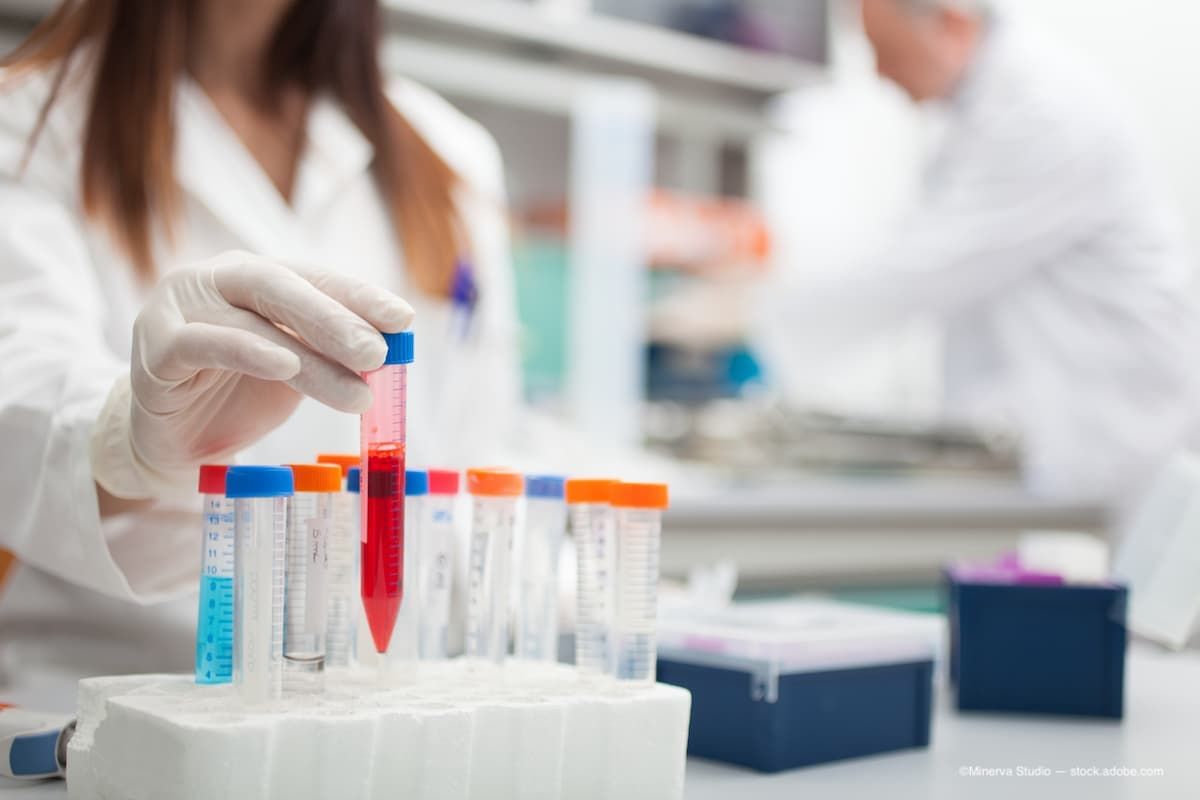Article
OKYO Pharma announces customs clearance of GMP packaged OK-101 drug to be used in phase 2 clinical trial for treating dry eye disease
Author(s):
The company is anticipating the first patient-first visit in Q1 2023 and is looking to release top-line data from the Phase 2 trial in Q4 2023.
OK-101 is a lipid conjugated chemerin peptide agonist of the ChemR23 G-protein coupled receptor which is typically found on immune cells of the eye responsible for the inflammatory response (Image Credit: Adobe Stock/Minerva Studio)

OKYO Pharma announced its GMP packaged OK-101 drug to be used in the upcoming Phase 2, first-in-human, clinical trial in patients with Dry Eye Disease, which was recently shipped from Europe, has cleared customs in the United States.
According to a press release from the company,1 OKYO is now in the process of having randomization codes generated for its double-blinded placebo-controlled trial. The company is also in the process of authorizing the clinical sites planned for the Phase 2 clinical trial, amongst other “activities needed for initiating the trial” not specified in the release.
OKYO describes OK-101 as a lipid conjugated chemerin peptide agonist of the ChemR23 G-protein coupled receptor which is typically found on immune cells of the eye responsible for the inflammatory response. According to the company OK-101 has been shown to produce anti-inflammatory and neuropathic pain-reducing activities in mouse models of Dry Eye Disease and corneal neuropathic pain, and is designed to combat washout through the inclusion of the lipid ‘anchor’ contained in the drug molecule to enhance the residence time of OK-101 within the ocular environment.
OKYO stated in the release the company is anticipating the first patient-first visit in Q1 2023 and is looking to release top-line data from this trial in Q4 of 2023.
Gary S. Jacob, PhD, CEO of OKYO Pharma discussed the importance of this customs clearance and the ability to move on with the Phase 2 clinical trial in the release.
“Initiation of the first-in-human Phase 2 trial for OK-101 to treat DED has been a central and critical goal for the company for the past 18 months,” said Jacob. “We are excited to be very close now to moving this drug into clinical trials and believe that OK-101 can provide a new way to treat DED patients who are presently not well-served by currently approved drugs.”
The Phase 2 trial is anticipated to be conducted in approximately 100 to 200 dry eye disease patients, according to the company, and is expected to be completed in 6 to 8 months from the enrollment of the first patient.2
The company initially received clearance of its Investigational New Drug (IND) application from the U.S. Food and Drug Administration (FDA) to initiate Phase 2 back in December of 2022.3
References:
OKYO Pharma announces custom clearance of GMP packaged OK-101 drug to be used in Phase 2 clinical trial for treating dry eye disease. Press release. OKYO Pharma; February 28, 2023. Accessed February 28, 2023. https://okyopharma.com/okyo-pharma-announces-custom-clearance-of-gmp-packaged-ok-101-drug-to-be-used-in-phase-2-clinical-trial-for-treating-dry-eye-disease/
OKYO to file IND in Q3 2022 for OK-101 to treat dry eye disease and to go directly to a Phase 2 human clinical efficacy trial in DED patients with a planned start date in Q4 2022 on an accelerated basis. Press release. OKYO Pharma; December 6, 2021. Accessed February 28, 2023. https://okyopharma.com/okyo-to-file-ind-in-q3-2022-for-ok-101-to-treat-dry-eye-disease-ded-and-to-go-directly-to-a-phase-2-human-clinical-efficacy-trial-in-ded-patients-with-a-planned-start-date-in-q4-2022-on-an-accelerated/
OKYO Pharma announces US FDA clearance of IND application for OK-101 for the treatment of dry eye disease. Press release. OKYO Pharma; December 22, 2022. Accessed February 28, 2023. https://okyopharma.com/okyo-pharma-announces-u-s-fda-clearance-of-ind-application-for-ok-101-for-the-treatment-of-dry-eye-disease/




